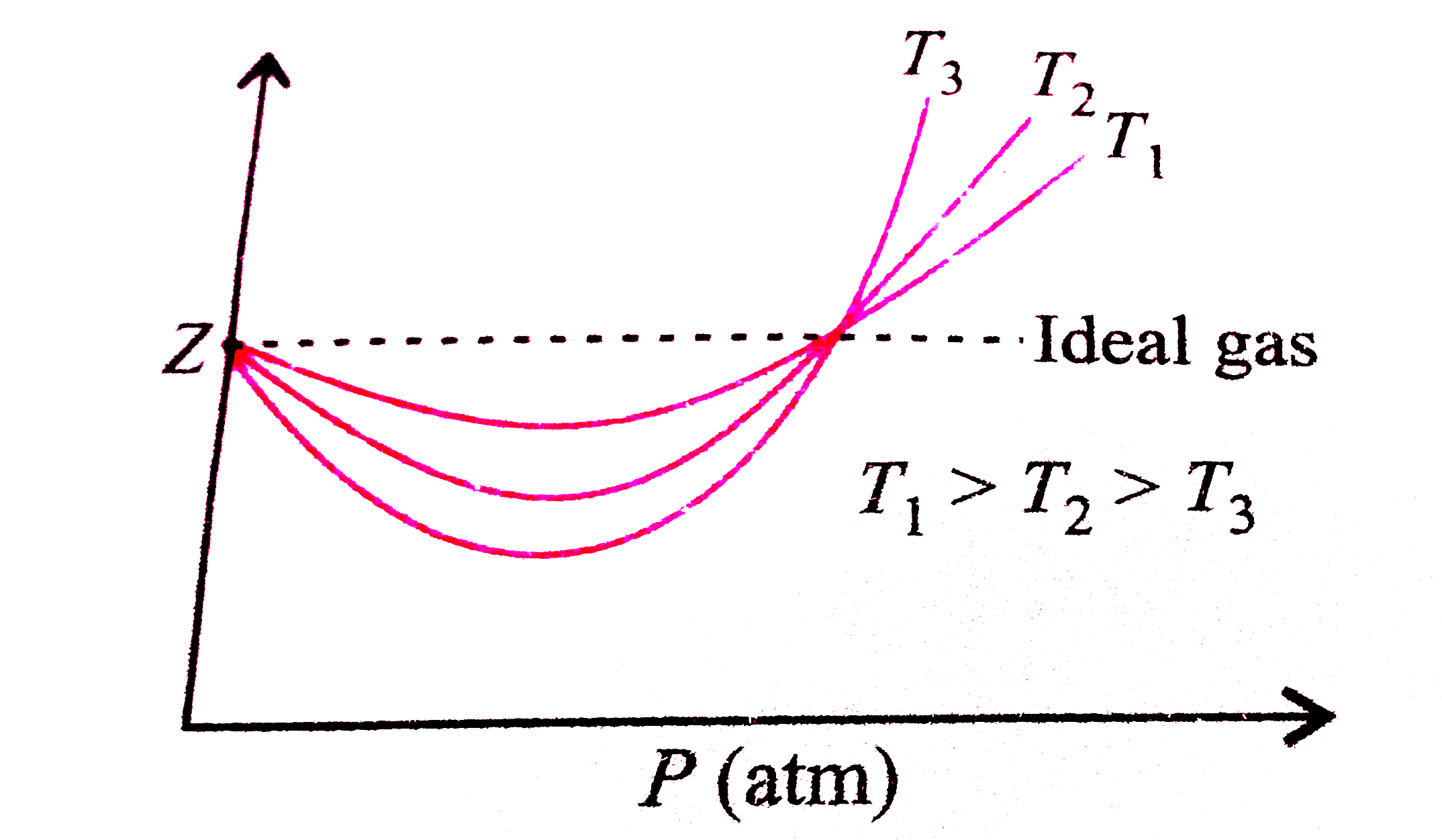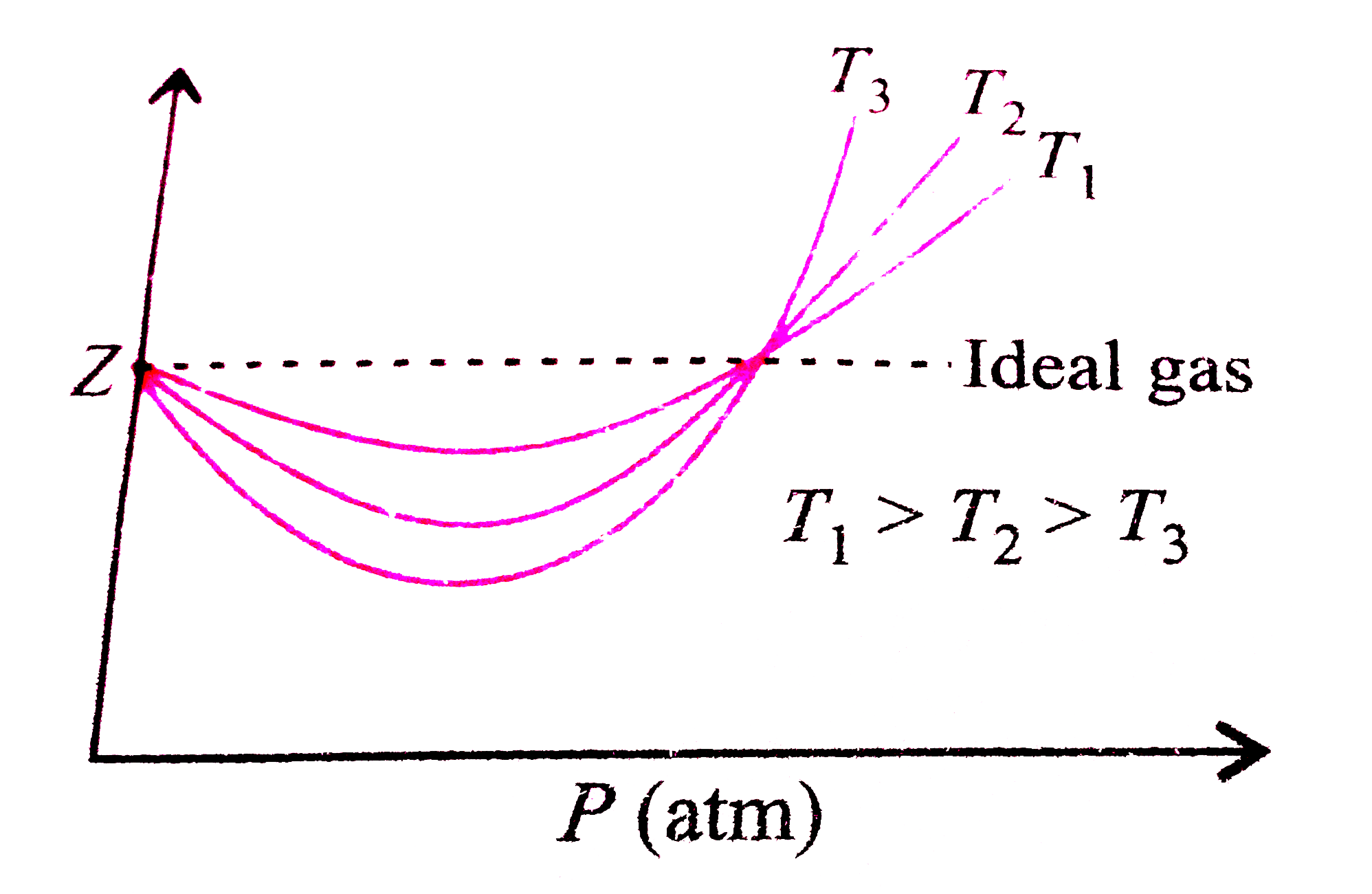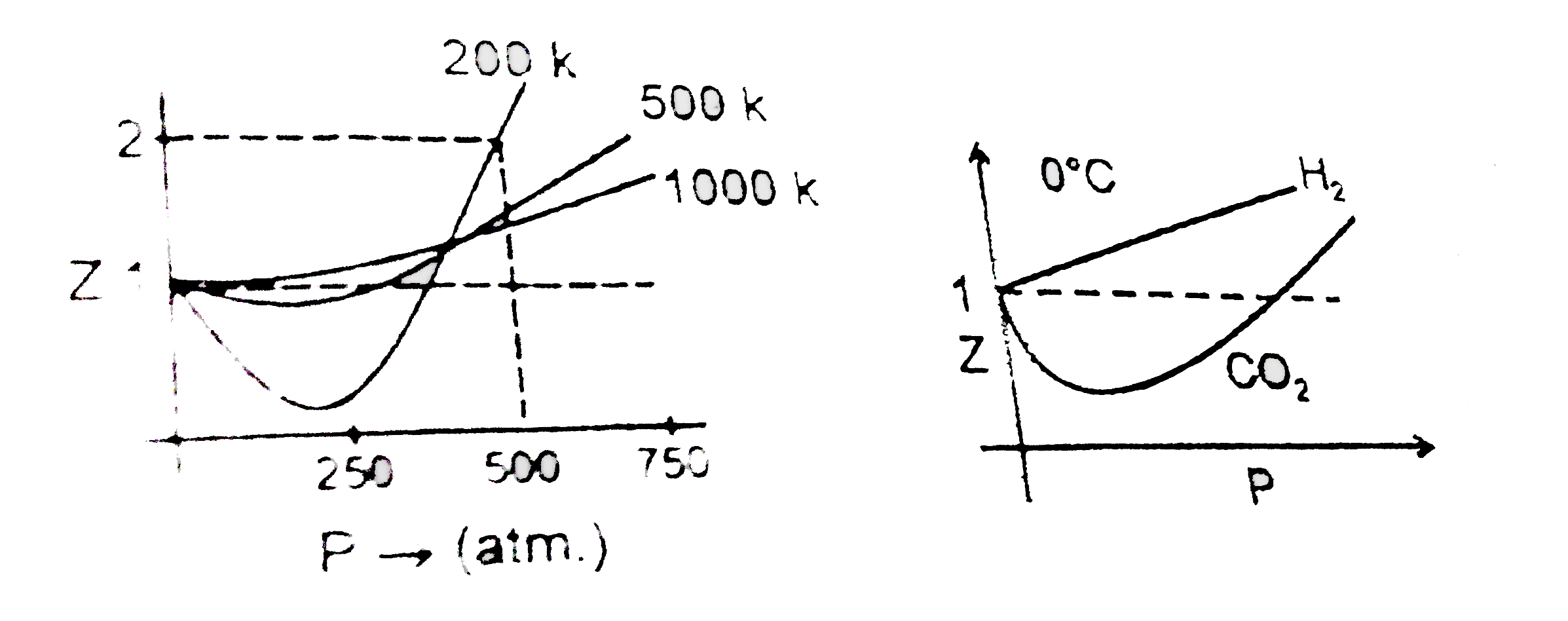Boyle's temperature (TB) : It is the temperature at which a real gas exhibits ideal behavior in low pressure range. Different gases have different value of TB, which is related to the van der Wall's constant a and ab as follows: TB=aRb
The compressiblity factor for a real gas is given as Z=1+0.35P−168TP. Where P is in bar and T is in Kelvin. What is the Boyle's temperature of the gas?
168K
480K
58.8K
575K
The correct Answer is:B
To find the Boyle's temperature TB of the gas, we start with the given compressibility factor equation:
Z=1+0.35P−168TP
Step 1: Set the condition for ideal gas behavior
At Boyle's temperature, a real gas behaves like an ideal gas, which means that the compressibility factor Z is equal to 1. Therefore, we set:
Z=1
Step 2: Substitute Z=1 into the equation
Substituting Z=1 into the compressibility factor equation gives:
1=1+0.35P−168TP
Step 3: Simplify the equation
Subtracting 1 from both sides, we have:
0=0.35P−168TP
Step 4: Factor out P
Factoring out P (assuming P≠0):
0=P(0.35−168T)
Step 5: Set the factor equal to zero
Since P cannot be zero for this condition, we set the factor in parentheses equal to zero:
0.35−168T=0
Step 6: Solve for T
Rearranging gives:
168T=0.35
Multiplying both sides by T and rearranging gives:
T=1680.35
Step 7: Calculate T
Now, performing the calculation:
T=1680.35=480 K
Conclusion
Thus, the Boyle's temperature TB of the gas is:
480 K
---
At Boyle's temperature, a real gas behaves like an ideal gas, which means that the compressibility factor Z is equal to 1. Therefore, we set:
Substituting Z=1 into the compressibility factor equation gives:
Subtracting 1 from both sides, we have:
Factoring out P (assuming P≠0):
Since P cannot be zero for this condition, we set the factor in parentheses equal to zero:
Rearranging gives:
Now, performing the calculation:
Thus, the Boyle's temperature TB of the gas is:
Topper's Solved these Questions
- TEST PAPERSBOOK - RESONANCE ENGLISHCHAPTER - TEST PAPERSEXERCISE - PHYSICS
784 Videos
- TEST PAPERSBOOK - RESONANCE ENGLISHCHAPTER - TEST PAPERSEXERCISE - PART - II PHYSICS SEC - 2
20 Videos
- SIMPLE HARMONIC MOTION BOOK - RESONANCE ENGLISHCHAPTER - SIMPLE HARMONIC MOTION EXERCISE - Advanced Level Problems
13 Videos
- TEST SERIESBOOK - RESONANCE ENGLISHCHAPTER - TEST SERIESEXERCISE - PHYSICS
130 Videos
Similar Questions
Boyle's temperature Tb is equal to
View SolutionBoyle's temperature or Boyle point is the temperature at which a real gas starts behaving like an ideal gas over a particular range of pressure. A graph is plotted between compressibility factor Z and pressure P.

What is the deviation of real gas from ideal behaviour in terms of compressibility factor , Z ?
View Solution
Knowledge Check
At Boyle's temperature , compressibility factor Z for a real gas is
A1B0C>1D<1
Boyle's temperature or Boyle point is the temperature at which a real gas starts behaving like an ideal gas over a particular range of pressure. A graph is plotted between compressibility factor Z and pressure P.

What is the variation of Z with pressure ?
View SolutionCompressibility factor, Z of a gas is given as Z=pVnRT
(i) What is the value of Z for an ideal gas ?
(ii) For real gas what will be the effect on value of Z above boyle's temperature ?
View SolutionThe temperature at which real gases obey the ideal gas laws over a wide range of low pressure is called:
(a)Critical temperature
(b)Inversion temperature
(c)Boyle temperature
(d)Reduced temperature
View SolutionAt a given temperature T, gases Ne, Ar, Xe and Kr are found to deviate from ideal gas behavior.
Their equation of state is given as P=RTV−b at T. Here, b is the van der Waals constant. Which gas will exhibit steepest increase in the plot of Z (compression factor) vs P?
View SolutionCritical constants are related with van der waals' constant as follows:
Vc=3b,Pc=a27b2,Tc=8a27Rb
The pressure required to liquefy a gas at the critical temperature is called :
View SolutionSketch shows the plot of Z v/s P for a hypothetical gas for one mole at three distint temperature.

Boyle's temperature is the temperature at which gas shows ideal behaviour over a pressure range in the low pressure region.Boyle's temperature (Tb)=aRb.If a plot is obtained at temperature well below Boyle's temperature then the curve will show negative deviation, in low pressure region and positive deviation in the high pressure region. Near critical temperature the curve is more likely as CO2 and the temperature well above critical temperature curve is more like H2 at 0∘C as shown above.At high pressure suppose all the constant temperature curve varies linearly with pressure according to the following equation : Z=1+PbRT (R=2calmol−1K−1)
Which of the following is correct :
View SolutionFigure shows volume - temperature (V-T) graph for same mass of an ideal gas at two different pressures P1and P2. Hence
View Solution
